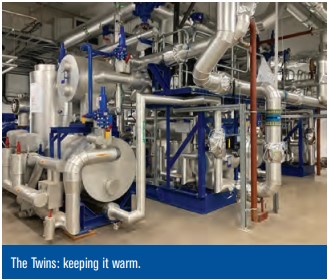I don’t often get to blow my own trumpet here, but the beginning of a new year is a good time for self-evaluation, and good news is always worth sharing. Ten years ago we commissioned a large river source heat pump system in Norway, recognized at the time as the largest and most efficient high temperature natural refrigerant heat pump in the world. The project won several awards, including the ASHRAE Comfort Cooling Award for Project Excellence, in recognition of the technical, commercial and financial successes it delivered for the district heating company who operate it.
We have now commissioned the next generation of this system much closer to home for me, on the banks of the River Clyde in Scotland. The site is just 10 miles from the birthplace of refrigeration pioneer James Harrison (see ASHRAE Journal, October 2018 60(10):72) and it was formerly John Brown’s shipyard in Clydebank, where many of the famous cruise ships of the Cunard line, including Queen Mary, Queen
Elizabeth and Queen Elizabeth II were built. In recognition of this heritage the campus now served by the heating network is called “Queens Quay.” There are two heat pump systems, known as “The Twins,” and they serve a mix of a sports center, a further education college, a residential care home for the elderly, the local town hall and of course a mix of houses and apartments. Plans are already underway to extend the network to the local hospital.
The Twins draw water from the river at an average temperature of about 8°C (about 46°F) and circulate hot water to the network at up to 75°C (about 167°F) achieving a heat advantage (also known as the heating CoP) of 3.0–3.5, depending on the warm return temperature. Like the Norwegian system, the refrigerant is ammonia, which was proved to give optimal performance in these conditions, and the combined heating capacity is 5,200 kW. A third unit of the same capacity is now under construction for delivery later in the year to another famous British seaport and more are on the way.
It’s important to recognize the role that the Scottish government has played in supporting this development through their grantaid scheme, the Low Carbon Infrastructure Transformation Program (LCITP), and the UK government through the Renewable Heat Incentive.
When the United Nations Climate Change Conference (COP26) finally convenes in Glasgow in November this year after being postponed by 12 months due to the pandemic, we are sure that the Twins will have many visitors, and it will be great to be able to showcase what has already been achieved in the reduction of carbon emissions through the application of refrigeration engineering technology. In the meantime it’s good to know that the Twins are keeping it warm for them, demonstrating the art of the possible.

